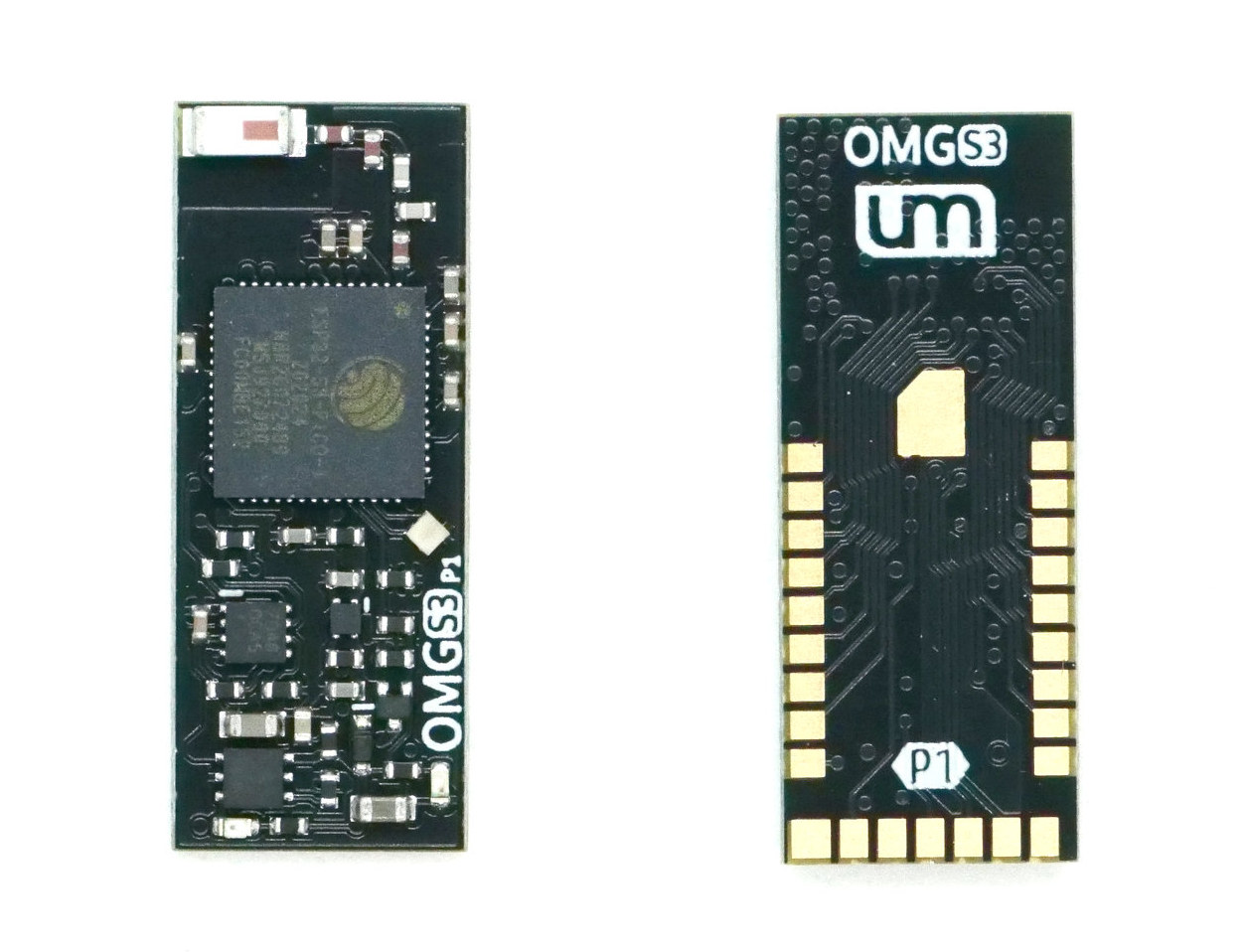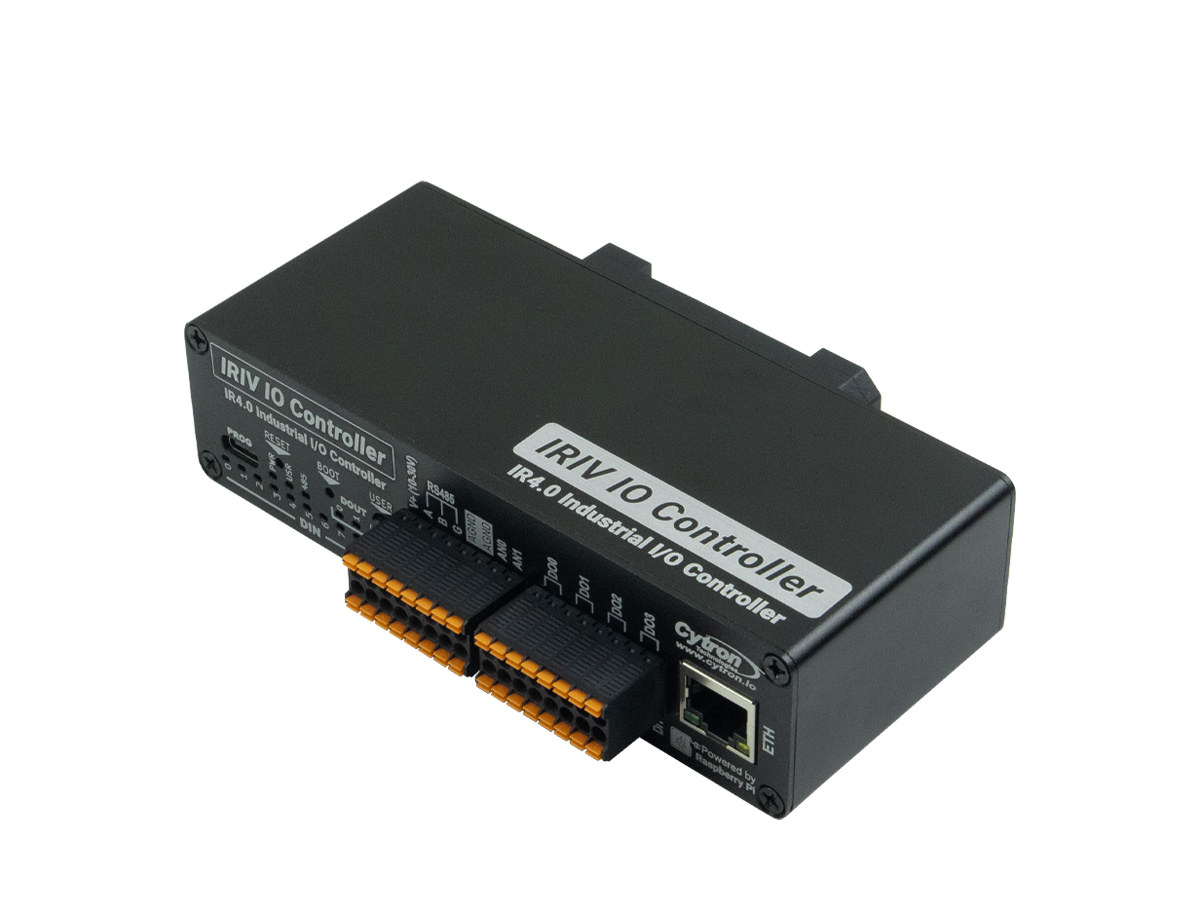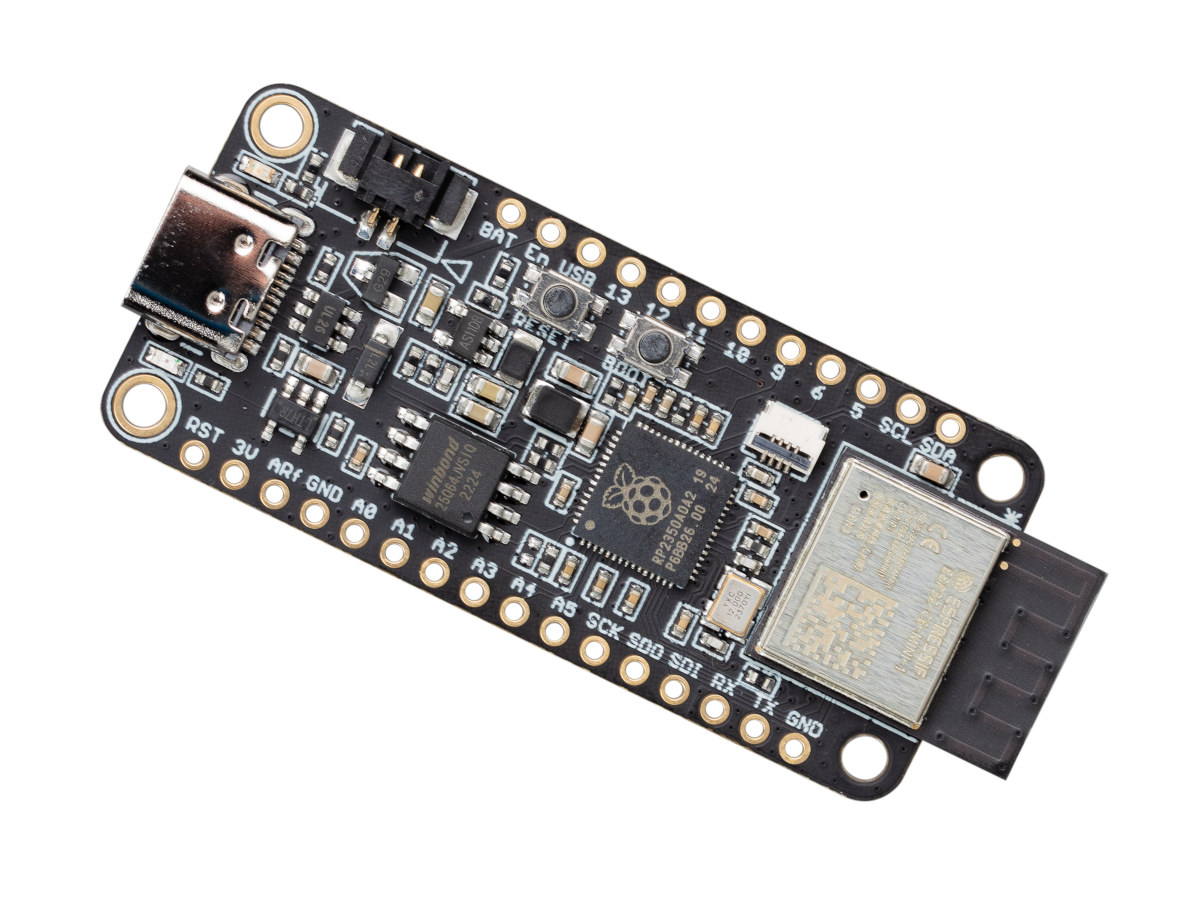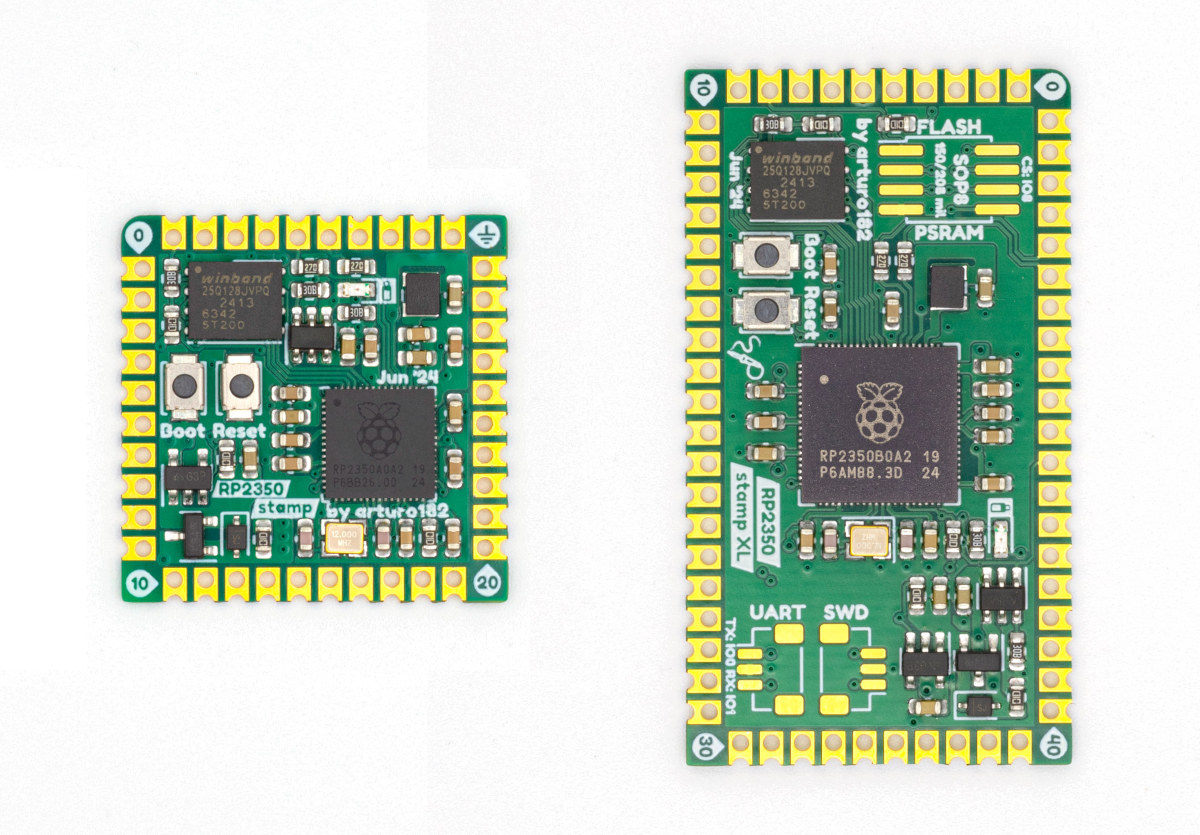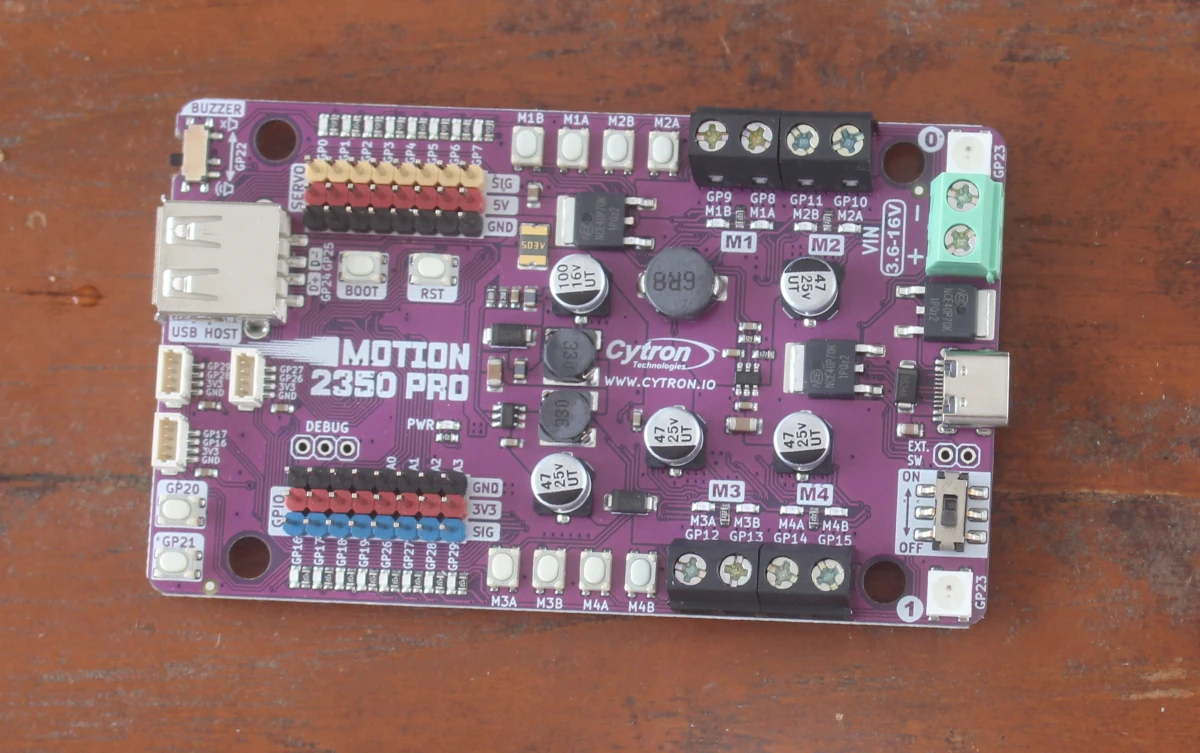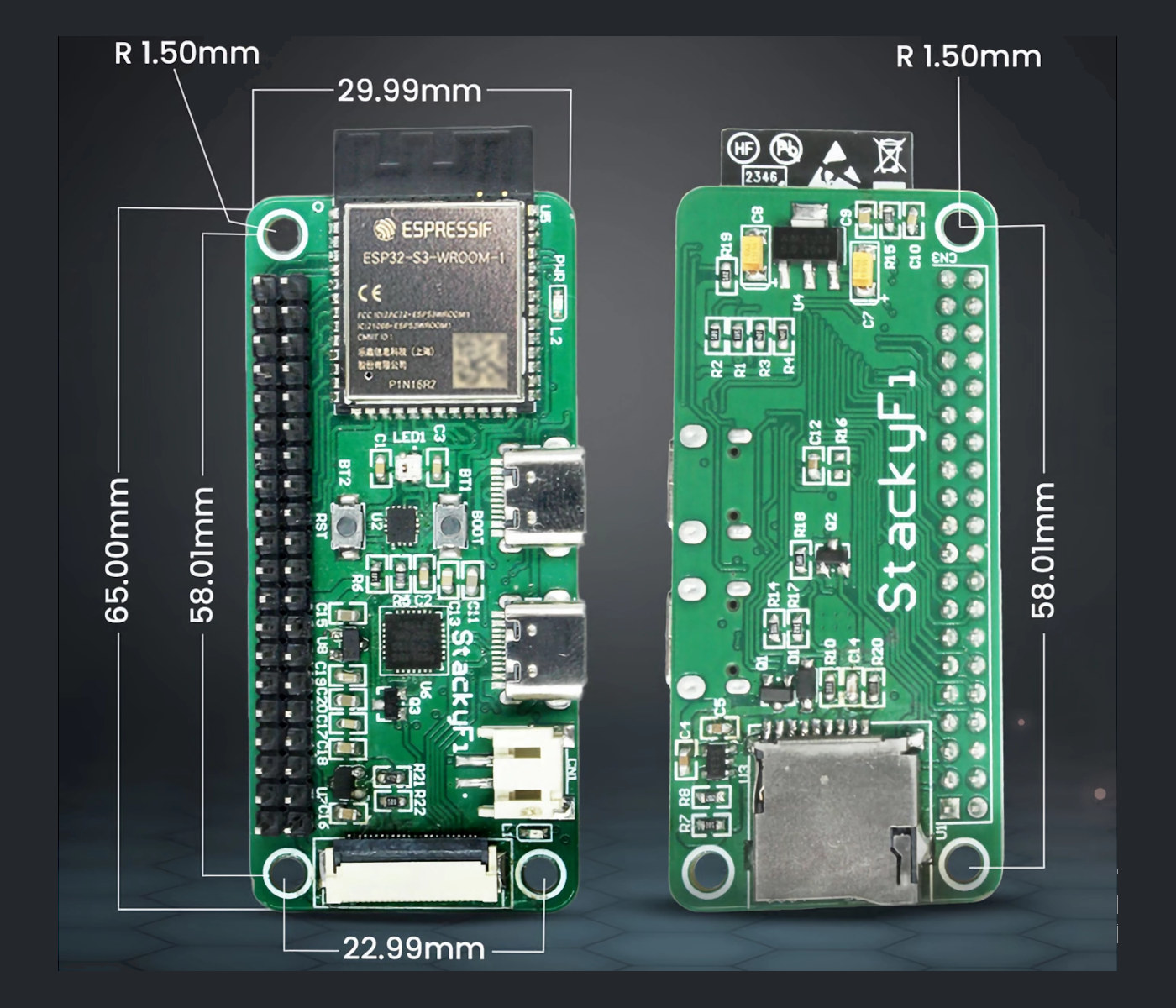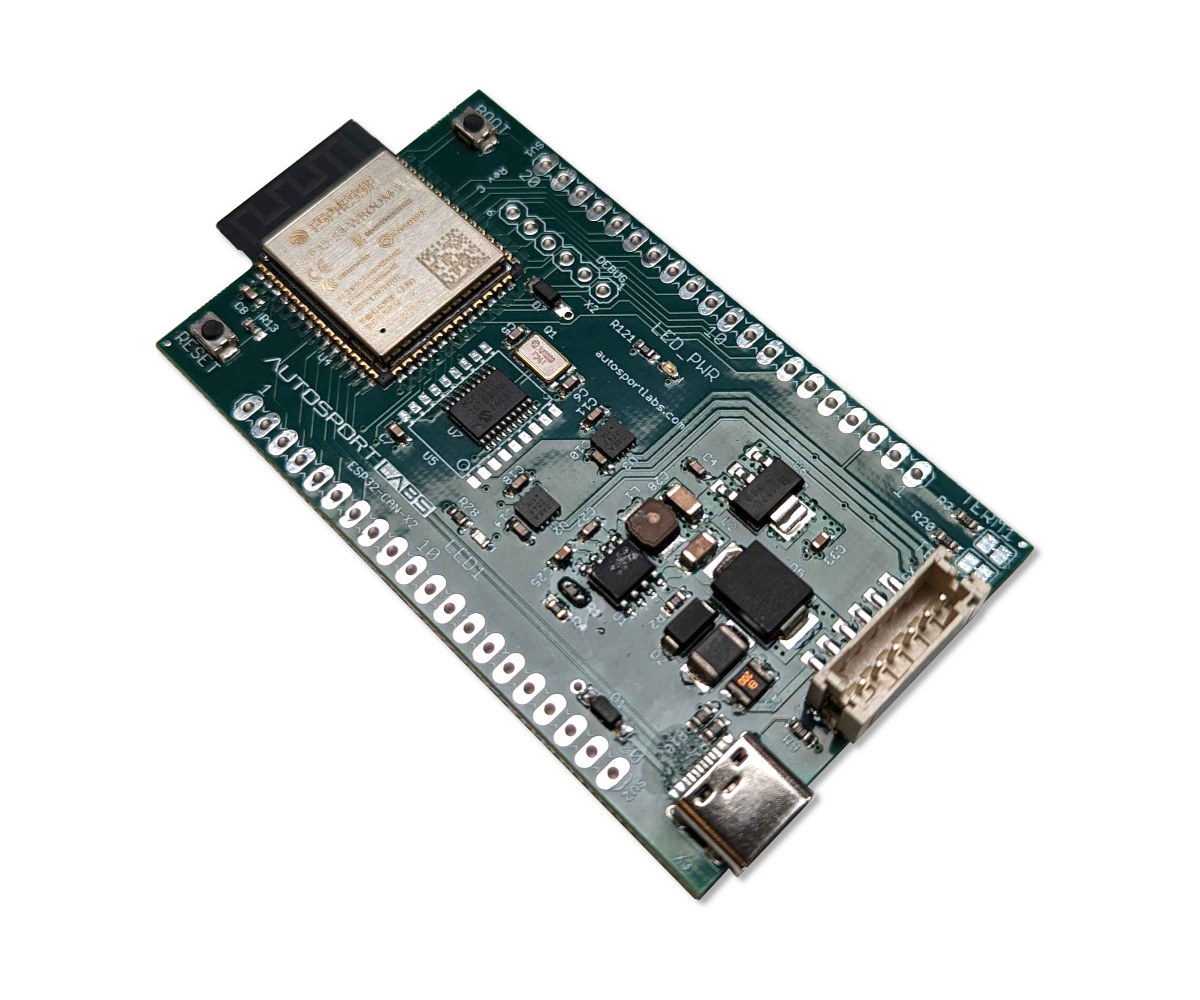Based on the ESP32-S3-PICO system-in-package (SiP), Unexpected Maker OMGS3 is a small, yet full-featured ESP32-S3 module/board whose designer claims is the world’s smallest in its category at just 25x10mm in size. It replaces the earlier Unexpected Maker NanoS3 based on the ESP32-S3FN8 SoC measuring 28 x 11 mm. The OMGS3’s ESP32-S3-PICO SiP integrates a dual-core ESP32-S3 WiFi and BLE wireless SoC, 8MB QSPI flash, and 2MB QSPI PSRAM. The board itself also includes a 3D antenna, an RGB LED, two LEDs for power and charging, and I/Os are exposed through 26 solder pads. Unexpected Maker OMGS3 specifications: SiP – Espressif ESP32-S3-PICO SoC ESP32-S3 dual-core Tensilica LX7 up to 240 MHz with 512KB SRAM, 16 KB RTC SRAM Wireless – WiFi 4 and Bluetooth 5 LE + Mesh Memory – 2MB QSPI PSRAM Storage – 8MB QSPI flash Antenna – High-gain 3D antenna I/Os via 26x solder pads Up to 17x GPIO […]
Cytron IRIV IO Controller – A Raspberry Pi RP2350-based industrial I/O controller
Cytron IRIV IO Controller is an “Industrial Revolution 4.0” (or Industry 4.0) controller based on the Raspberry Pi RP2350 microcontroller that comes with an Ethernet port implemented through the W5500 chipset, and several isolated interfaces such as DI and DO up to 50V, two analog inputs, and RS232 and RS485 serial interfaces accessible through terminal blocks. Last year, the company introduced the Cytron IRIV PiControl industrial controller based on the Raspberry Pi CM4 module, and the IRIV IO Controller is a much cheaper solution using a subset of the features and a design that looks similar. IRIV IO Controller specifications: Microcontroller – Raspberry Pi RP2350A CPU Dual-core Arm Cortex-M33 @150MHz with Arm Trustzone for secure boot Dual-core 32-bit Hazard3 RISC-V @ 150MHz Up to two cores can be used at the same time Memory – 520 KB on-chip SRAM in 10 banks Storage – 2MB flash memory Networking – 10/100M […]
Challenger+ RP2350 WiFi6/BLE5 board combines Raspberry Pi RP2350 MCU with ESP32-C6 WiFi 6 and Bluetooth 5.4 LE module
You don’t need to wait for the Raspberry Pi Pico 2 W to get a Raspberry Pi RP2350 board with WiFi and Bluetooth thanks to the Challenger+ RP2350 WiFi6/BLE5 board that combines an RP2350A microcontroller with an ESP32-C6 module offering 2.4 GHz WiFi 6 and Bluetooth 5.4 LE connectivity. The board follows the Adafruit Feather form factor with 28-pin through holes for I/Os making it compatible with FeatherWings add-on boards. It comes with a USB-C port for power and programming, and a JST connector plus a charging circuit for people wanting to connect a LiPo battery. Challenger+ RP2350 WiFi6/BLE5 specifications: Microcontroller – Raspberry Pi RP2350A MCU CPU Dual-core Arm Cortex-M33 processor @ 150MHz Dual-core 32-bit RISC-V processor @ 150MHz Only two cores can be used at a given time Memory – 520KB internal RAM 8KB OTP Storage Package – QFN-60; 7×7 mm Memory – 8MB PSRAM Storage – 8MB SPI […]
Solder Party’s “RP2350 Stamp” modules features Raspberry Pi RP2350A or RP2350B microcontroller
Solder Party’s RP2350 Stamp is an update to the company’s tiny RP2040 Stamp module based on a Raspberry Pi RP2350A, and they also introduced the RP2350 Stamp XL module that makes use of the extra GPIO pins on the RP2350B, and a “RP2xxx Stamp Carrier XL” carrier board taking either module. RP2350 Stamp and RP2350 Stamp XL The RP2350 Stamp has exactly the same layout as the RP2040 Stamp and mostly benefits from the more powerful Cortex-M33 cores, additional memory, and security features, while the XL variant adds more GPIOs, footprint for a PSRAM chip, as well as UART and SWD connectors. Both come with a 16MB SPI flash for storage. RP2350 Stamp specifications: Microcontroller – Raspberry Pi RP2350A MCU CPU – Dual-core Arm Cortex-M33 processor @ 150MHz Memory – 520KB internal RAM 8KB OTP Storage Package – QFN-60; 7×7 mm Storage – 16MB flash I/Os – All 30x I/Os […]
Cytron MOTION 2350 Pro – A Raspberry Pi RP2350 board for robotics and motor control
As mentioned in the Raspberry Pi Pico 2 article, third-party RP2350 boards are already available, and one of them is the MOTION 2350 Pro board from Cytron designed for robotics and motor control. The board features a DC motor driver capable of controlling up to 4 brushed DC motors with voltage ratings from 3.6V to 16V. It also features eight 5V servo ports, eight GPIO ports, and three Maker ports for sensor or actuator modules. Each I/O is matched with its own LED which makes the board ideal for the education market and also simplifies debugging. Finally, a USB 1.1 host port is present to connect peripherals such as the RF dongle for a joystick or a keyboard. Cytron MOTION 2350 Pro specifications: Microcontroller – Raspberry Pi RP2350 CPU – Dual-core Arm Cortex-M33 processor @ 150MHz (RISC-V cores are not mentioned, so they are likely not used at all) Memory […]
StackyFi ESP32-S3 board features camera connector, 40-pin GPIO header for Raspberry Pi HAT (Crowdfunding)
SB Components’ StackyFi is an ESP32-S3 WiFi and Bluetooth IoT board with a 40-pin GPIO header compatible with most Raspberry Pi HAT expansion boards and a camera connector for image capture to a microSD card or machine learning applications. The Raspberry Pi Zero-sized board also comes with two USB Type-C ports, one “native” and the other for serial debugging, an IMU sensor, an RGB LED, and Boot and Reset buttons. The board can be powered through one of the USB-C ports or a LiPo battery. It partially builds upon the earlier StackPi board with a Raspberry Pi RP2040 microcontroller. StackyFi specifications: Wireless module – ESP32-S3-WROOM-1 MCU – ESP32-S3 dual-core Tensilica LX7 up to 240 MHz with 512KB SRAM Memory – TBD PSRAM Storage – TBD flash Wireless – WiFi 4 and Bluetooth LE 5 PCB antenna Storage – MicroSD card Camera I/F – FPC connector that works with OV2640 camera […]
Autosport Labs ESP32-CAN-X2 board combines two CAN bus transceivers with automotive-grade power supply
Autosport Labs, a company that makes products for motorsport acquisition and real-time telemetry, has launched the ESP32-CAN-X2 board with an ESP32-S3 microcontroller, two CAN bus interfaces, and an automotive-grade power supply with a 6V to 20V DC input range. ESP32 boards with CAN Bus have been around for years starting with the Olimex ESP32-EVB Board which we covered in 2017, and followed by boards such as the CAN32 board, CanLite ESP32, or RejsaCAN-ESP32-S3. The ESP32-CAN-X2 adds another option with ESP32-S3 and two CAN Bus interfaces. ESP32-CAN-X2 board specifications: Wireless module – ESP32-S3-WROOM-1-N8R8 MCU – ESP32-S3 dual-core Tensilica LX7 microcontroller up to 240 MHz with 384KB ROM, 512KB SRAM, 16 KB SRAM in RTC Memory – 8MB PSRAM Storage – 8MB flash Wireless – WiFi 4 and Bluetooth LE 5 PCB antenna USB – USB Type-C port for flashing and power CAN Bus 6-pin header for 2x CAN V2.0B communication 1x […]
The RPGA Feather dev board pairs RP2040 chip with a Lattice iCE40 FPGA for sensor fusion projects
Oak Development Technologies’ RPGA Feather board integrates the Raspberry Pi RP2040 microcontroller with the iCE5LP4K FPGA from Lattice Semiconductor into a compact development board in the Adafruit Feather form factor. The iCE5LP4K FPGA is an ultra-low-power chip in the iCE40 Ultra product family designed for mobile applications such as smartphones, tablets, and handhelds, while the Raspberry Pi RP2040 microcontroller makes it much easier to program the FPGA using CircuitPython. We have seen Oak Development Technologies’ earlier forays into FPGA Feather-compatible products such as the IcyBlue board (also based on iCE5LP4K FPGA) and the Lattice FeatherWing. RPGA Feather specifications: MCU – Raspberry Pi RP2040 dual-core Cortex-M0+ microcontroller @ 133 MHz with 264KB SRAM FPGA – Lattice Semiconductor iCE5LP4K FPGA Logic Cells – 3,520 logic cells Memory 80 Kbits of embedded Block RAM (EBR) Distributed RAM: 640 bits 2x hardware I2C blocks and 2x hardware SPI blocks 26 I/Os for customized interfaces […]


